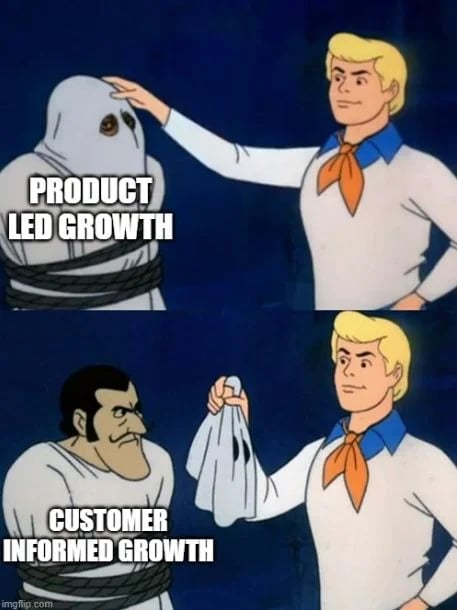To PLG or not to PLG?
Gabriel Marechal
4/22/20252 min read


To PLG or not to PLG?
📣 For anyone that needs to hear it: Product Led Growth is not incompatible with Customer Led Growth!
The PLG name might be deceiving particularly in the B2B SaaS world but being product led doesn’t mean letting the product department make all the decisions on how your solution is built and it’s roadmap (sorry fellow engineers!).
There’s also no fancy hacks, shortcuts, or cute messaging plays to being product led (sorry sales and marketing teams 😬 ).
Instead, it refers to the concept that if you focus your time, money, and resources into building something that speaks directly to the needs and challenges of your users they’re going to buy, use, and recommend it happily and your business will scale and grow based on that strong product market fit developed.
In a recent post, Adam Robinson was covering his “biggest failures” (I mean… huge respect for talking about these and not hiding from it!) while launching 3 companies, and his second example struck a chord with me / inspired this.
Having to throw away a year’s (or more) worth of hard work & investment because no one cares is the worst fear of any founder.
Bringing theory to practice, when first conceptualizing what would eventually become ARRow #forecaasarrow, I was initially wondering how to be a player in a market that seemed to be satisfied with current “solutions”.
In conversation with CFOs however, it was clear that constantly exporting data not just to Excel but to other “integrated 🙄” tools in general was a major pain point and caused revenue data to still be siloed away and extremely hard to properly analyze.
That was a key reason why ARRow was built to be 100% Salesforce native – to create that single source of revenue truth in a CRM that’s most widely used by our ICP and aligned with our technical expertise.
It also meant that while ARRow initially launched in 2021, we didn’t release it publicly on the App Exchange until the end of 2022. At ForecaaS Software Inc., that time to market (and to generate revenue 😅 ) is something that we are now working on reducing for future products ( 👀 ) but at the onset it allowed us to feel confident in the solution and get as much real-life user feedback as possible through our select few beta customers.
Also being completely bootstrap probably helped, we chose not to open it up to outside investors from the get go allowing us to avoid having to appease a rush to market… I know not all organizations have that luxury!
All of this early ICP feedback helped intuitively build a solution from the ground up based on how RevOps folk actually work, with the specifications, accuracy, and ease of information Finance and Exec teams need and expect.
Ask, receive, iterate.
Early and continuously.
You get a stronger solution to market.
Customers get a solution that’s aligned to their Jobs to be Done.
Everyone wins when you really know what they want and really give it to them.
ForecaaS Software
The Recurring Revenue Specialists for Salesforce
Questions?
© 2025. All rights reserved.
